Disclaimer: this information is for educational purposes only and has not been evaluated by the FDA or CFIA. It is not intended to diagnose, treat, cure, or prevent any disease. Please consult your primary care physician for advise on any of this.
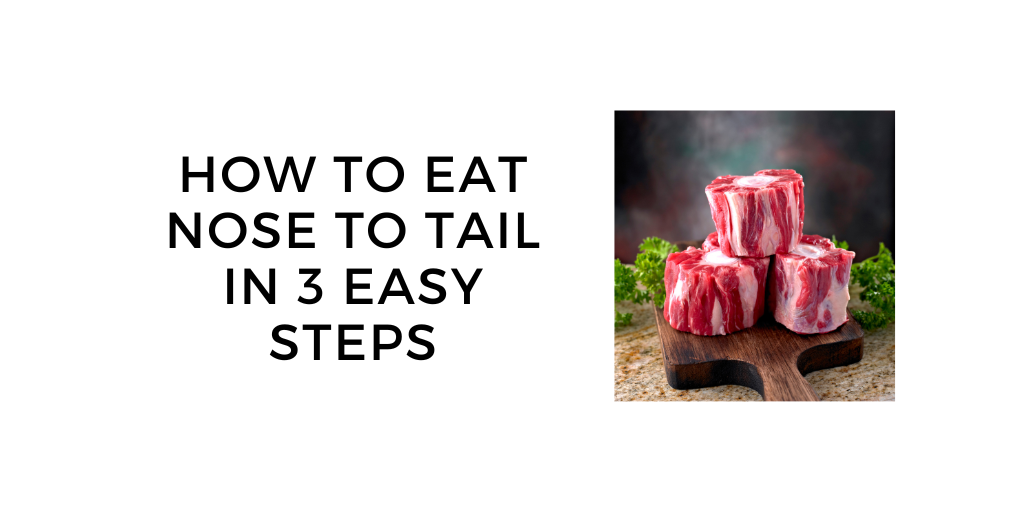
Nose to Tail Eating: Benefits, Recipes, Nutrition
How to Eat From Nose to Tail
Learn why nose to tail is the most sustainable and environmentally friendly way to eat
Nose to tail is also the healthiest way to eat, more on that below.
My personal consumption habits dominate my thoughts. I'm sure they do the same for you, and that's why you found this article.
From media to possessions to technology and food, you strive to learn what drives consumption and how you can focus on things that serve you.
Meat consumption is a hot button issue. As the founder of a company that uses sections of the animal, I feel it’s my duty to stay informed.
Quick note about that: my company makes and sells the most nutritious and delicious nose to tail bone broth you'll ever try. Try some today and see for yourself.

What does it mean to eat nose to tail?
Eating nose to tail means that you are enjoying and using the entire animal, not just prized pieces like chicken breast. This mean you eat the delicious organs, fat and unpopular parts. This is how your ancestors ate before you could get food in grocery stores.
The best way to reduce your environmental footprint is to eat nose to tail.
Waste is a big issue. Our preoccupation with perfection when it comes to our food leads to a ton of wastage.
Grocery stores reject foods that don’t look pretty on shelves. It’s not their fault. They’re responding to what we want.
What happens to these non pretty foods? They go to the landfill.
If we can find a way to use and not waste our meals, it’ll go a long way to helping solve hunger and nutritional deficiencies around the world.
A good step is to ensure your own consumption is in order. Let's open our minds around why and how meat should be consumed.
An issue you may not know about is eating too much muscle meat at the expense of more nutritious sections. This is particularly an issue in the West where the norm is chicken breast, steak and pork chops.
These pieces has little nutrition beyond protein and may be harmful in large doses. More on that below.
I get the appeal for choice pieces that are wrapped in plastic at the butcher counter. It’s what diet and media tell us to eat. It’s wrong.
Let’s Talk About Nose to Tail Eating
Nose to tail eating is simply eating or using every single part of the animal.
It is the way our ancestors ate. The times necessitated it as our distant relatives couldn’t afford to waste any calories and they suffered less chronic diseases than we do now.
A common mistake many health conscious people make is eating too much lean tissue. Western health media focuses on protein over nutrient density.

We translate this into copious amounts of chicken breast and steak when we should reach for more nutrient dense alternatives like:
- Organs (heart, liver, kidney)
- Skin
- Fats (tallow, schmaltz, lard)
- Short ribs, oxtail, flanks
- Tendons and cartilage
- Fatty parts
If you don’t eat any of the things listed above, you may have nutritional deficiencies that you don’t even know about that could lead to chronic diseases.
6 Reasons For Eating From Nose to Tail
6 reasons for eating from nose to tail are health benefits, saving money, environmental positives, nutrients, it's the way our ancestors ate and you open your mind to amazing flavors.
I'll walk you through each benefit in detail below.
Longevity, Health and Vitality
Western diet staples like chicken breast and lean steaks are rich in an essential amino acid called methionine.
Methionine is mostly found in lean muscle tissue. It helps keep your liver and hormones in check.
The problem is that it is toxic for you in the doses most western diets consume.
It shortens our lifespan. Animals who eat lots of methionine die younger and get more diseases than those who eat less (1).
You might know where this is going… eat less and live forever, right? Not quite.
Turns out, another amino acid called glycine buffers the harmful effects of methionine in your body.
Glycine benefits include regulates inflammation, boosts your antioxidant levels in your body and keeps your liver toxins in check.
Glycine makes up 1/3rd of collagen protein and bone broth. Some experts recommend 8-10 grams are needed daily if you are consuming lots of lean muscle from animals.
Glycine is found in gelatinous parts like chicken skin, tendons and connective tissue, small bones (sardines, herring), chicken wings, oxtail. One serving of bone broth or collagen gives you 4-5 g of glycine.
You don’t have to worry about methionine if you eat nose to tail because you naturally get more glycine and less methionine.

It Reduces Food Waste And is Good For The Environment
We throw out one third of our food. Now there are many distribution and political explanations for this, but that is a discussion for another article.
Western countries' demand for mainstream diet friendly animal parts contributes to the demise of our food system and health.
These consumption habits also mean that a large part of the carcass is thrown away, contributing to greenhouse gas emissions through the burning of fossil fuels to dispose of them.
Eating this way ensures that resources that went into creating the animal are not thrown out.
You can make your Carnivore-style consumption more sustainable and ethical if you maximize the calories eaten per animal.
If you’re more efficient eating a share of one cow, it reduces your need for another. Eating this way also pays the ultimate respect to the animal who gave their life for your meal.
Perhaps it’s contradictory to some, but you can be both a mammal lover and a meat eater.
It celebrates each animal by using everything. Fewer of them need to be used.
“This is a celebration of cuts of meat, innards, and extremities that are more often forgotten or discarded in today’s kitchen; it would seem disingenuous to the animal not to make the most of the whole beast: there is a set of delights, textural and flavorsome, which lie beyond the fillet.”
― Fergus Henderson
You Save Money on Cost Effective Cuts of Meat

Supply and demand dictates that less popular meats cost less. You can find organs like beef liver, kidney or heart for a fraction of the cost of steaks.
With a little time and preparation, they taste better than more traditional, commodity cuts.
If you’re feeling adventurous, consider going whole or 1/2 cow. You can go in with your neighbours or friends on a ¼ or ½ cow, for example.
Whole animals cost less because they are priced as one item by weight. The price of more expensive cuts is averaged out by less expensive ones.
This is a great option when you don’t mind a bit of extra work in the kitchen.
Full of Nutrients (Iron, B Vitamins, Choline)
Heart is full of CoQ10, a nutrient that is sometimes deficient in people with chronic health conditions.
Organs are like nature’s multivitamin. They’re high in iron, vitamin B12 and B6, folate, choline, iron, zinc and many more nutritious minerals and compounds.

Research shows that one serving of liver gives you 50,000X more Vitamin A, over 2X the iron and hundreds more B12 than other cuts of red meat.
Across the board organ meats give you between 10 to 100 times more nutrients per serving than muscle meats.
This is great because you can eat slightly less meat (and more vegetables) whilst getting more nutritional benefits. These parts lead to a reduction in your risk of getting certain diseases too.
Whole Animal is the Way our Ancestors Ate
Meat wasn't always unsustainable or unethical. Our homo sapien relatives eating philosophy celebrated the whole animal.
After hunting and killing prey, the most nutrient dense parts were eaten first. These included the organs, bone marrow and fattier cuts. The rest went into salting to preserve them.
Bone marrow in particular is among the best superfoods and goes great with toasted sourdough bread.
These parts have a reputation for tasting awful but having the most vitamins and minerals. This translated into survival.
The leaner muscle meats were not useful because they had too much protein / amino acids and no fat. Fat is needed to absorb vitamins and minerals properly.
Our ancestors should be applauded for their resourcefulness. They found ways to use the entire animal, including the necks, shoulders, innards, brains and kidneys.
Animals were respected and appreciated for giving their life by using all of the animal. Some ancestral communities even made early iterations of stock.
Fast forward a few millennia, you definitely have a kooky grandparent who loved liver and onions or head cheese. They were a luxury back then, of course.
These unusual meals went from dietary staple to forgotten grossness and out of the dinner conversation. However, we are seeing a revival of the whole animal movement. You should join it!
You Open Your Mind to New Delicious Flavors
Some nose to tail staples are an acquired taste. But if you take some time to prepare them correctly, you’d be amazed at how delicious they are.
Tough cuts of meat are filled with collagen. Collagen is the sinewy connective tissue that makes meat tough.
It just takes longer to break down the collagen tissue. But you are left with melt-in-your mouth flavours.
There’s nothing better than braised beef short ribs or oxtail. These two examples that hit home rule number one of cooking obscure cuts.
How do you cook nose to tail?
Cooking nose to tail cuts is tricky, but the two top tips to make things easy and delicious are to cook very slow and to marinate.
Keep things low and slow
Slower cooking times at a lower temperature help break down the collagenous muscle fibres. It leaves you with meat that falls off the bone.
Get my list of the best 6 bone broths on the market.

Marinate always
Liver, kidneys, flanks and other cuts respond well to acid. The acid in marinades is needed to remove some of the strong taste of organs.
I typically marinate my liver for 3-6 hours in either red wine, balsamic, apple cider vinegar or lemon juice combined with smoked paprika, cumin, garlic powder, cinnamon, salt and pepper.
If you can’t get down with liver on it’s own, then try grinding it up and combining it with ground beef. You can also incorporate it into sausage making.
Beef heart is my personal favourite. It tastes like the most amazing steak you’ve ever eaten.However you need to marinade it for at least 24 hours. The same marinade as above works great!
How to get started with nose to tail?
You can get started with nose to tail by going part by part, sourcing animals correctly, eating the skin and trying bone broth.
1. Go part by part
Experiment with one lesser-known cut like oxtail, liver or heart before taking on something more ambitious. Most butchers and some specialty markets sell these cuts.
Fish provides a simple way to expose yourself. Smaller canned fish can be eaten whole: like some salmon, herring, sardines and anchovies. Fish bones are a great source of glycine and calcium.
2. Source animals correctly
Eating less meat or different cuts of meat misses the point if the meat you eat is from bad sources.
For all animal sourcing, trust is the single most important thing. You need to trust the source is telling the truth about their claims. Here is a checklist for buying meat products or bone broth.
This is why 3rd party validation (like Certified Organic or the Global Animal Partnership) is important.
For beef and lamb: choose grass fed / finished, pasture raised and organic. Beef gets a bad rep from a few propaganda laden documentaries.
But it is far healthier and better for from an environmental and ethical perspective to eat beef than chicken or pork.
The big secret of the agriculture industry is that chicken and pork are easily the shadiest industries. They’re fed genetically modified feed, exposed to antibiotics and live in awful conditions ridden with diseases.
At the very least your chicken should be organic and non-gmo. Get to know your butcher or farmer and ask their advice for the best quality.
Farmers markets are great for this as you directly support local agriculture. Fish should be wild caught if possible.
3. Eat the skin and fat
Stop throwing away the skin on your fish and chicken or fat on your steak. You should embrace the extra flavour and chewing.

Weston A Price found that civilizations that spent more time chewing their tough cuts of meat had better dental health.
4. Try making bone broth!
Grab some frozen bones from your local market or butcher and start experimenting with making your own bone broth.
Bone broth is a great way to use up vegetable scraps as well.
5. Make the perfect charcuterie plate
Look for local pâtés, liver sausages or terrines and serve with an assortment of other charcuterie fair like: crackers, pickles, dried fruits and nuts.
Closing Thoughts: Our Food System Needs an Overhaul
There you have it. A few ideas to hopefully open your mind to nose to tail eating. It is how we should approach our animal consumption today.
This way we can save money, the environment and our health.
I make an effort to question my assumptions by reading a lot of counter-arguments in an effort to be as objective as possible. Although that is impossible to be completely objective.
If you want to get started, try a low sodium bone broth like Bluebird Provisions. They are available on Amazon Prime or direct from them.
With that said, a few questions for you.
Do you eat nose to tail? What’s your favorite way to prepare a lesser known section of the animal? Leave a comment and let me know!
FAQ's
What is head to tail eating?
Head to tail eating is also known as nose to tail eating. It is a way of eating that uses and celebrates the entire animal from organs and fat to rump and bones. This type of eating is gaining popularity in the US because it has tons of health, environmental and economic benefits to you.
Do organ meats have glycine?
Organ meats have a between 1-2 g of glycine per 100g serving. Here is exactly how much glycine is found in foods below.
- Bone Broth: 3 g / cup
- Beef Liver: 1.8 g / 100g
- Pork Skin: 1.7 g / 100g
- Game Meats: 1.5 g / 100g
- Chicken Skin: 1.2 g / 100g
- Crustaceans: 1 g / 100g

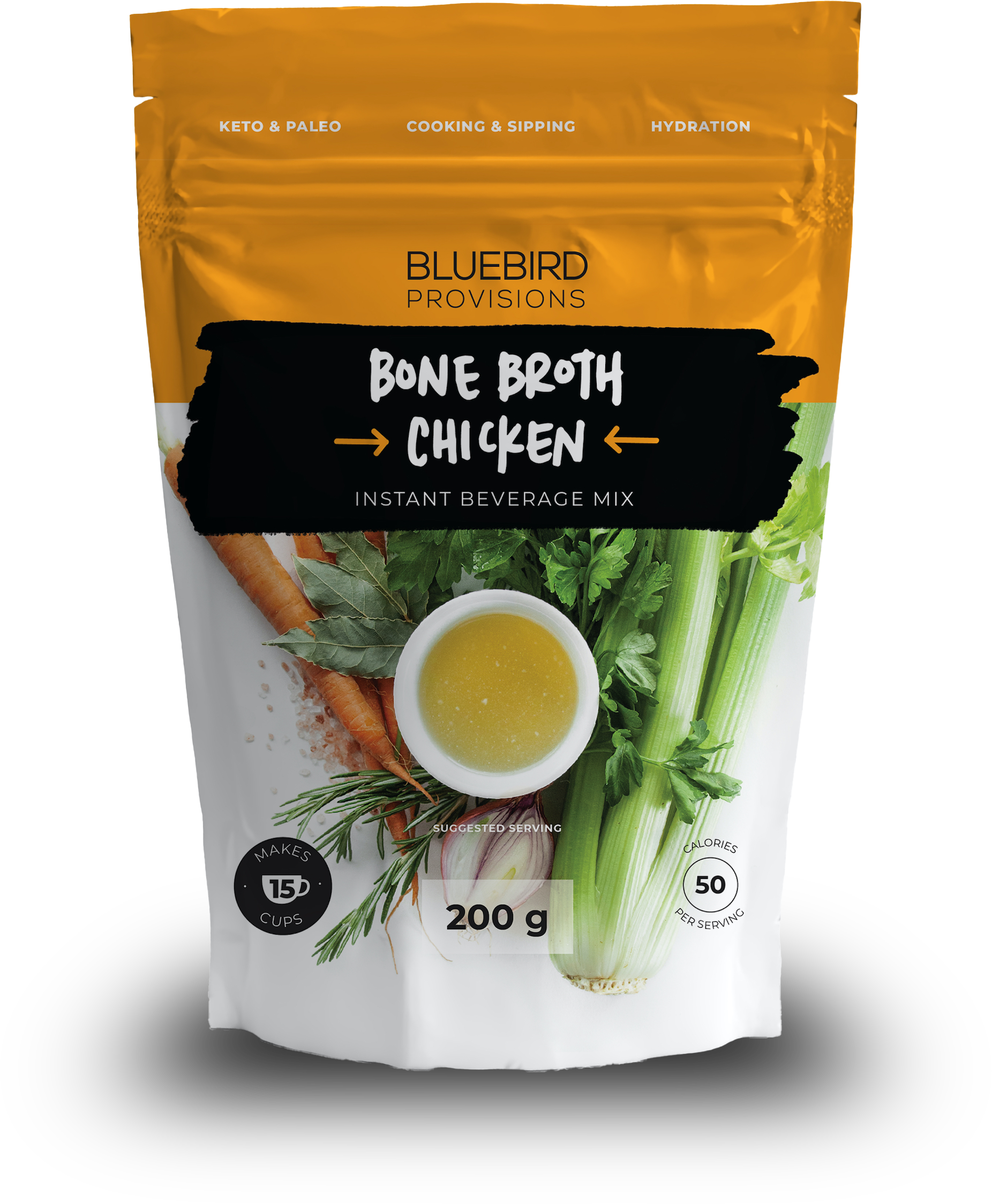
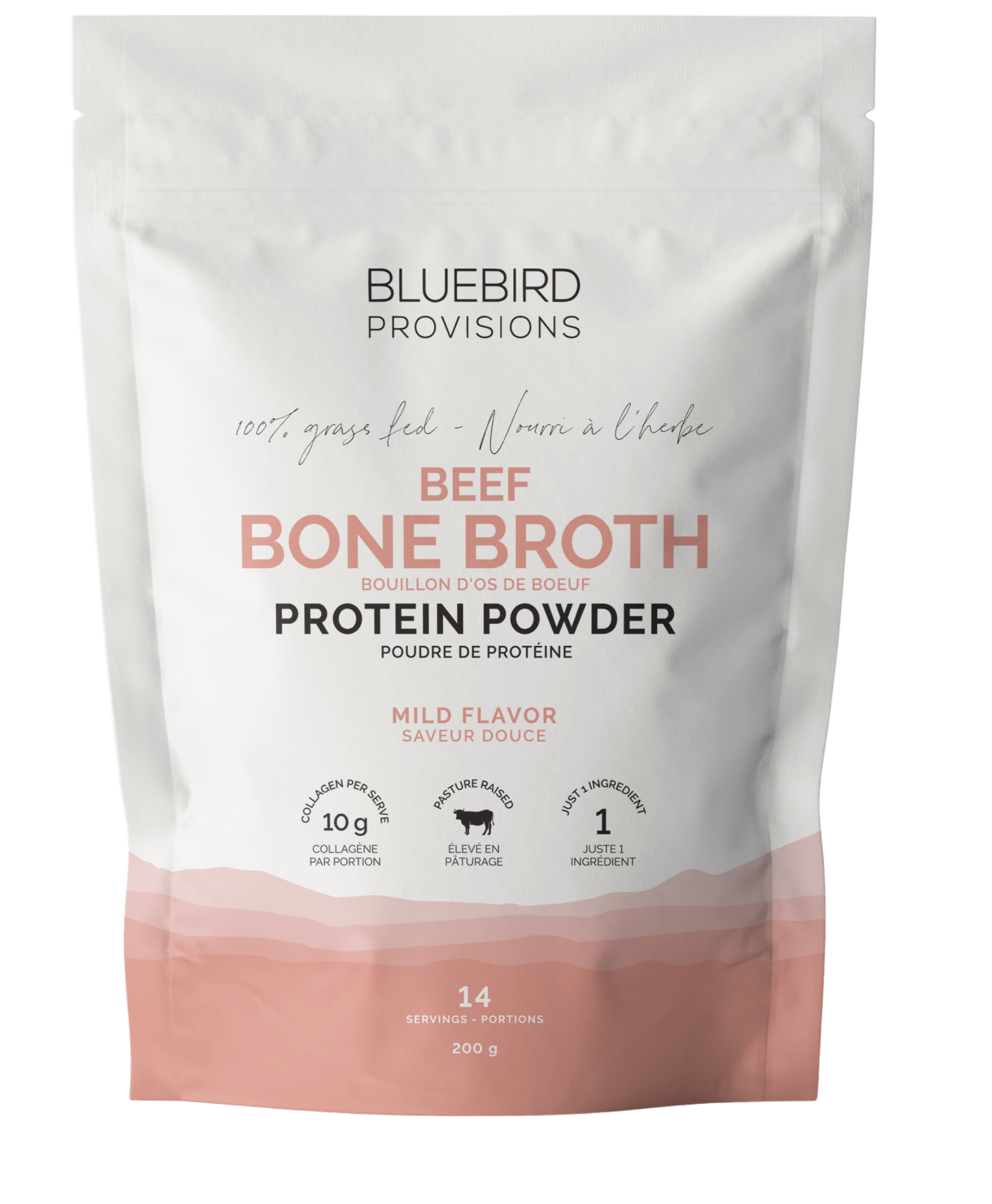
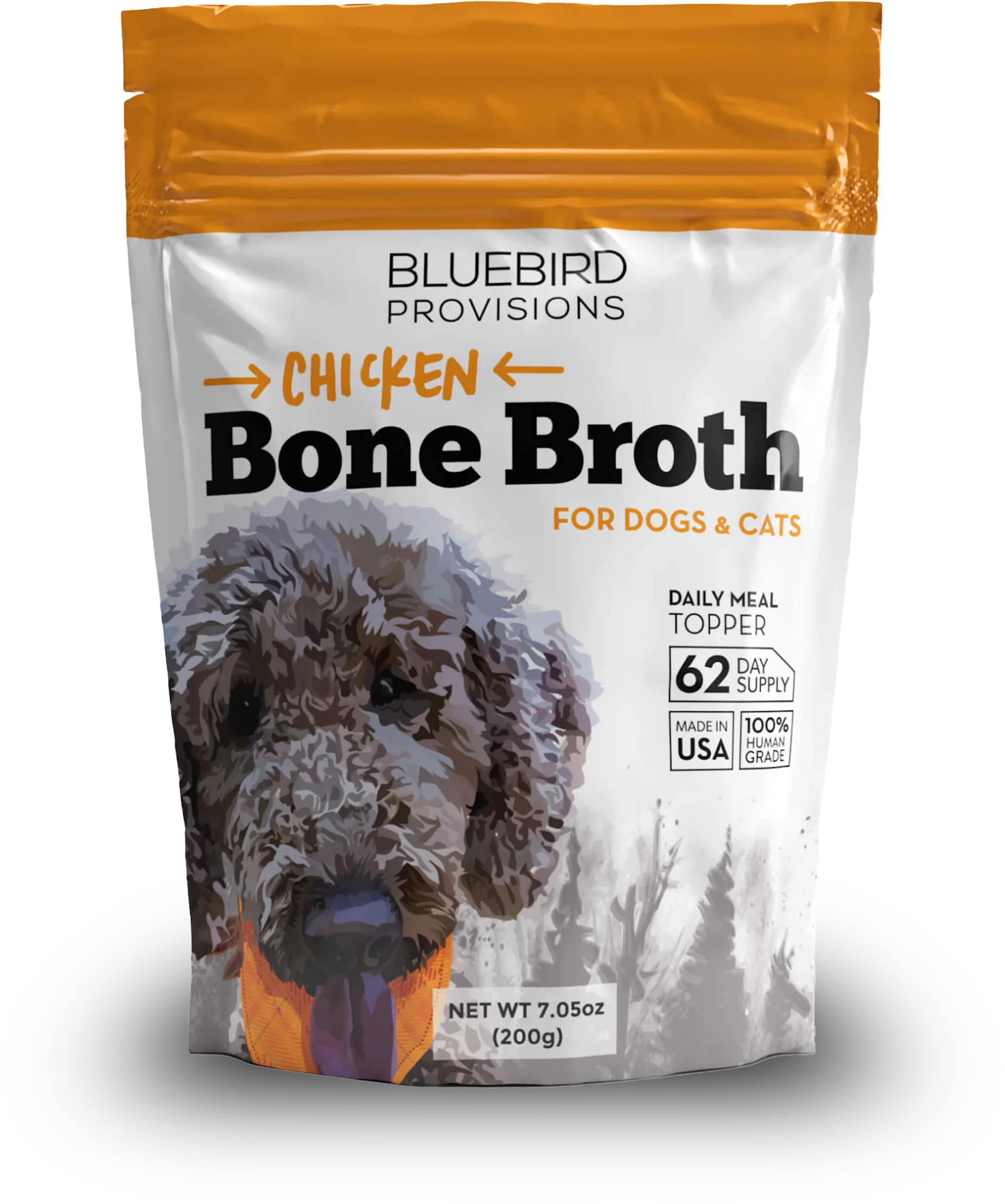
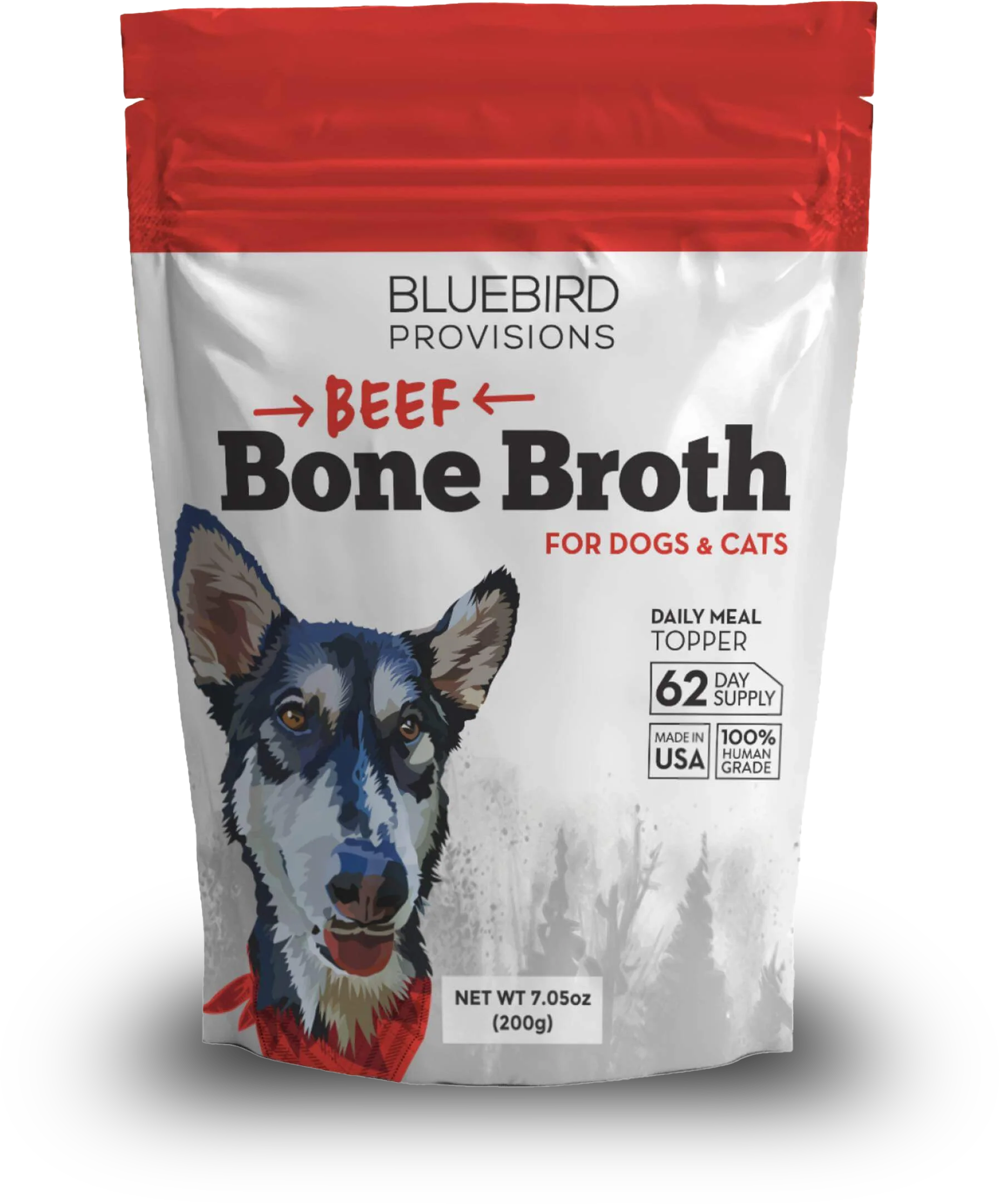
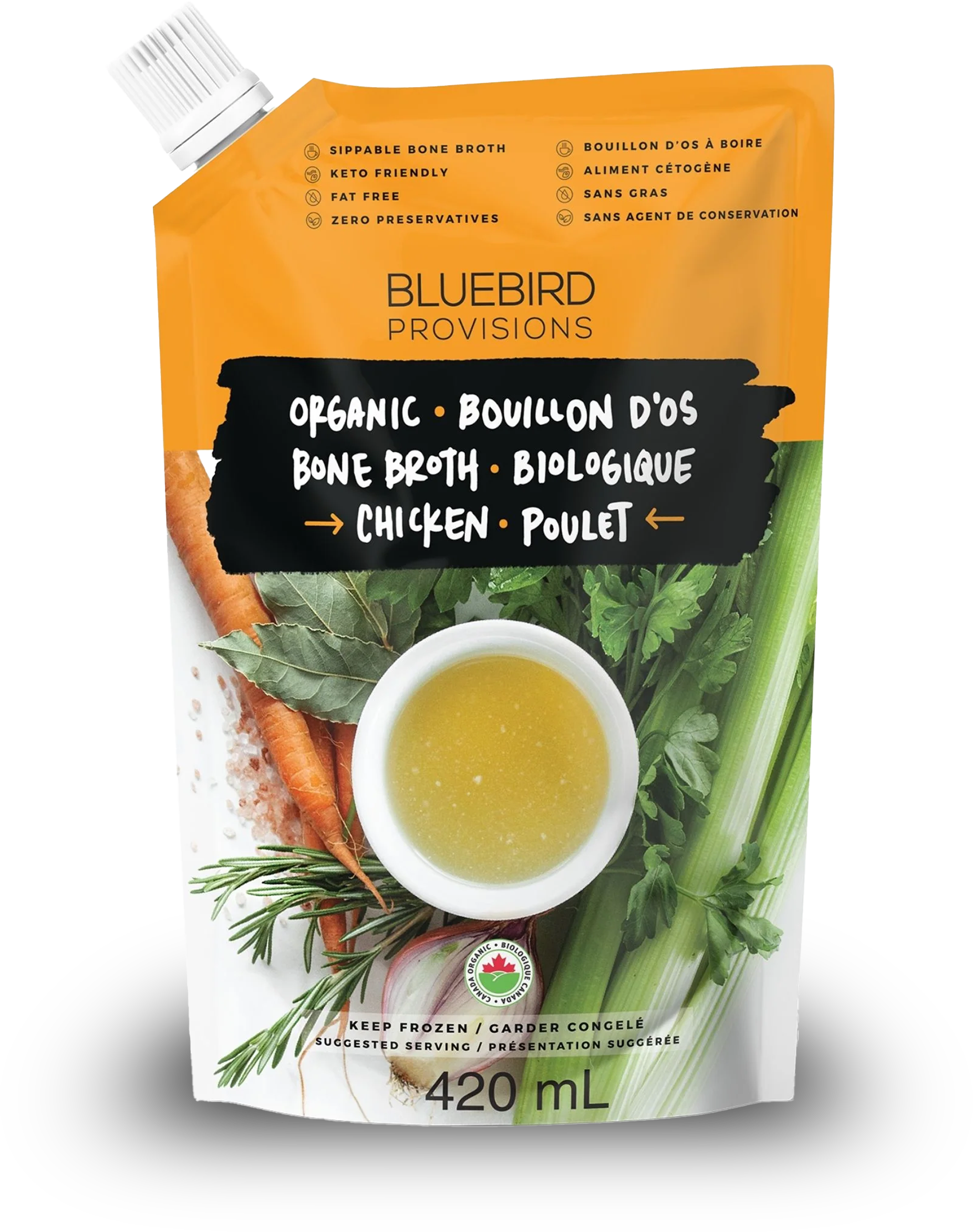
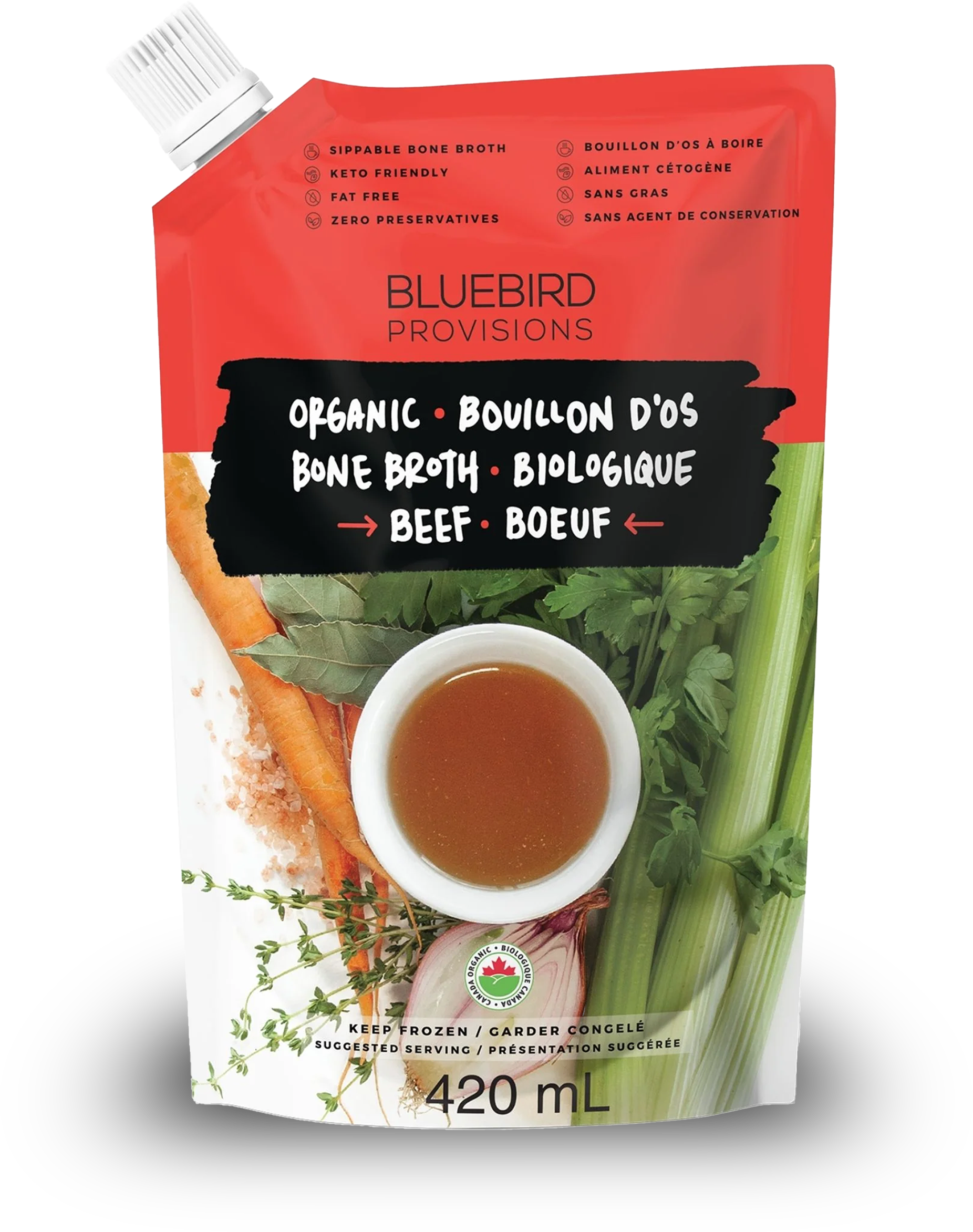




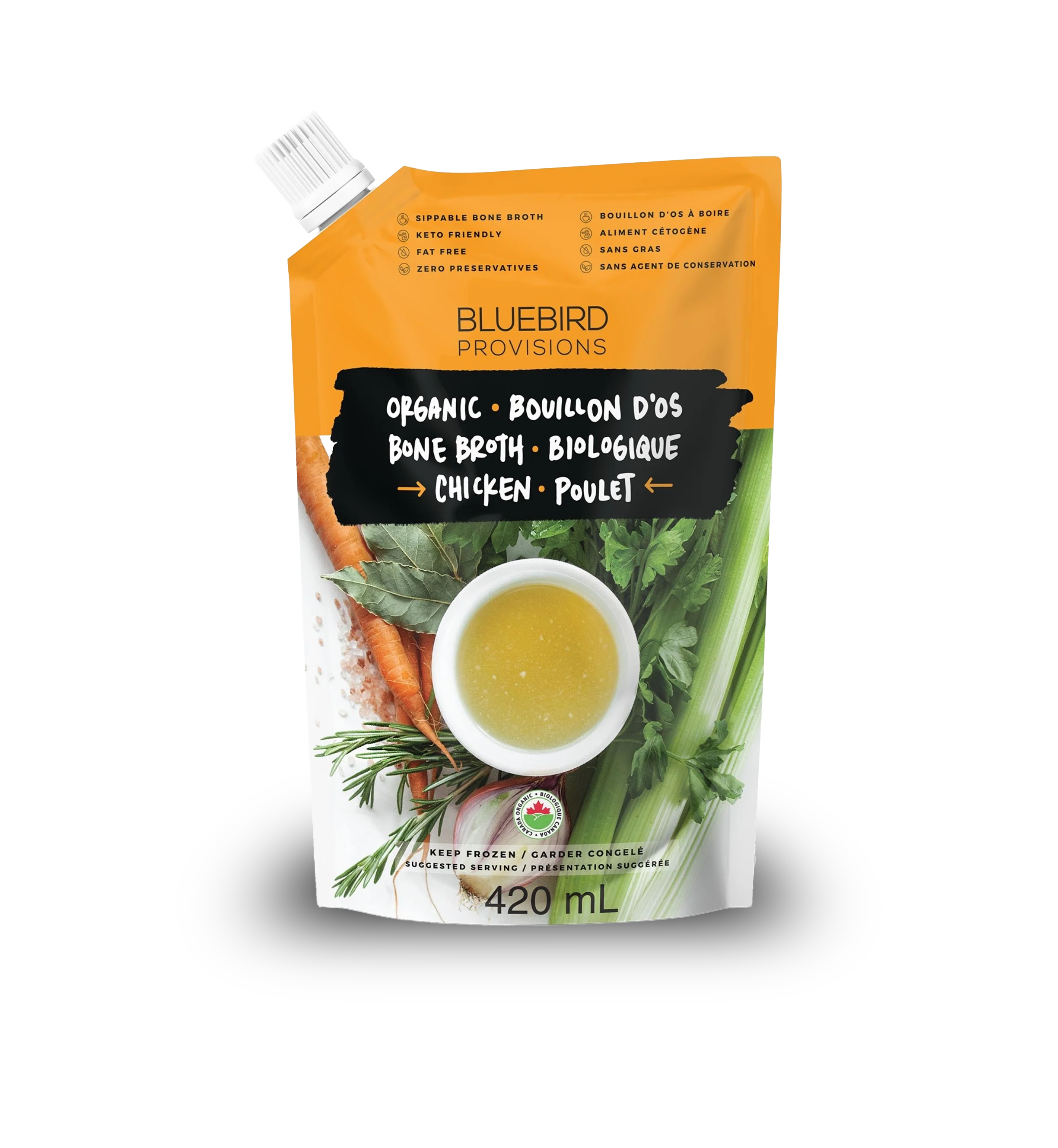
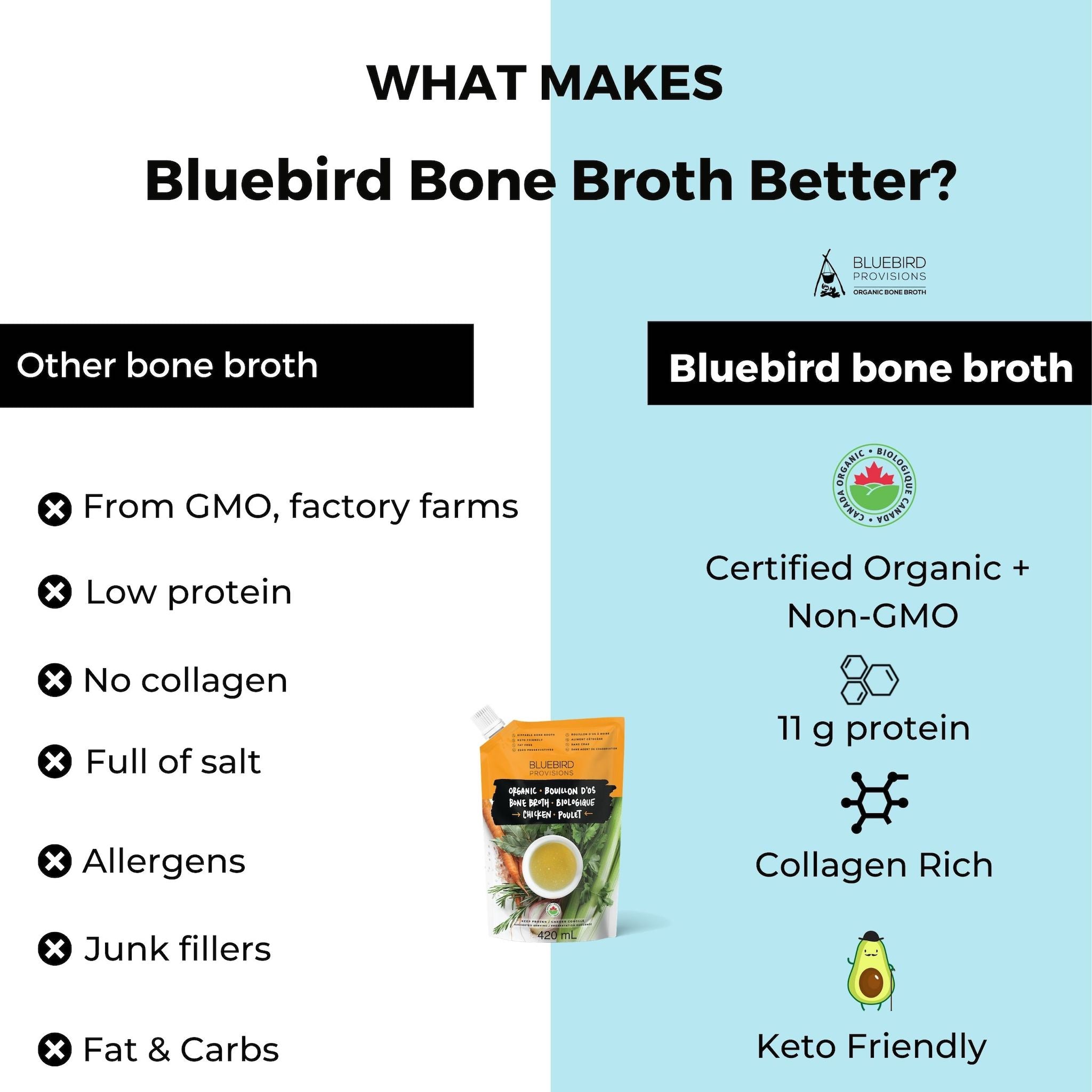
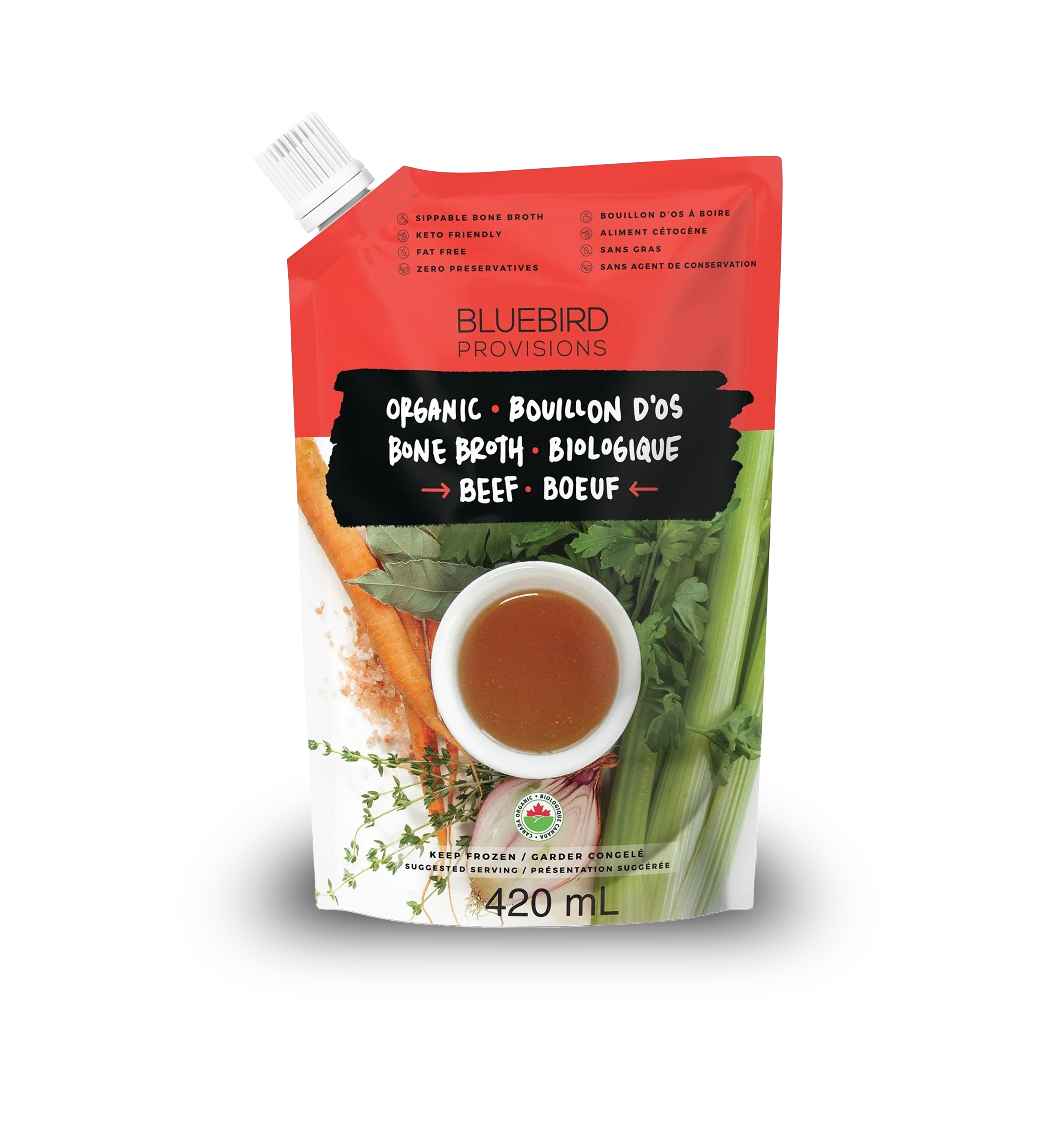
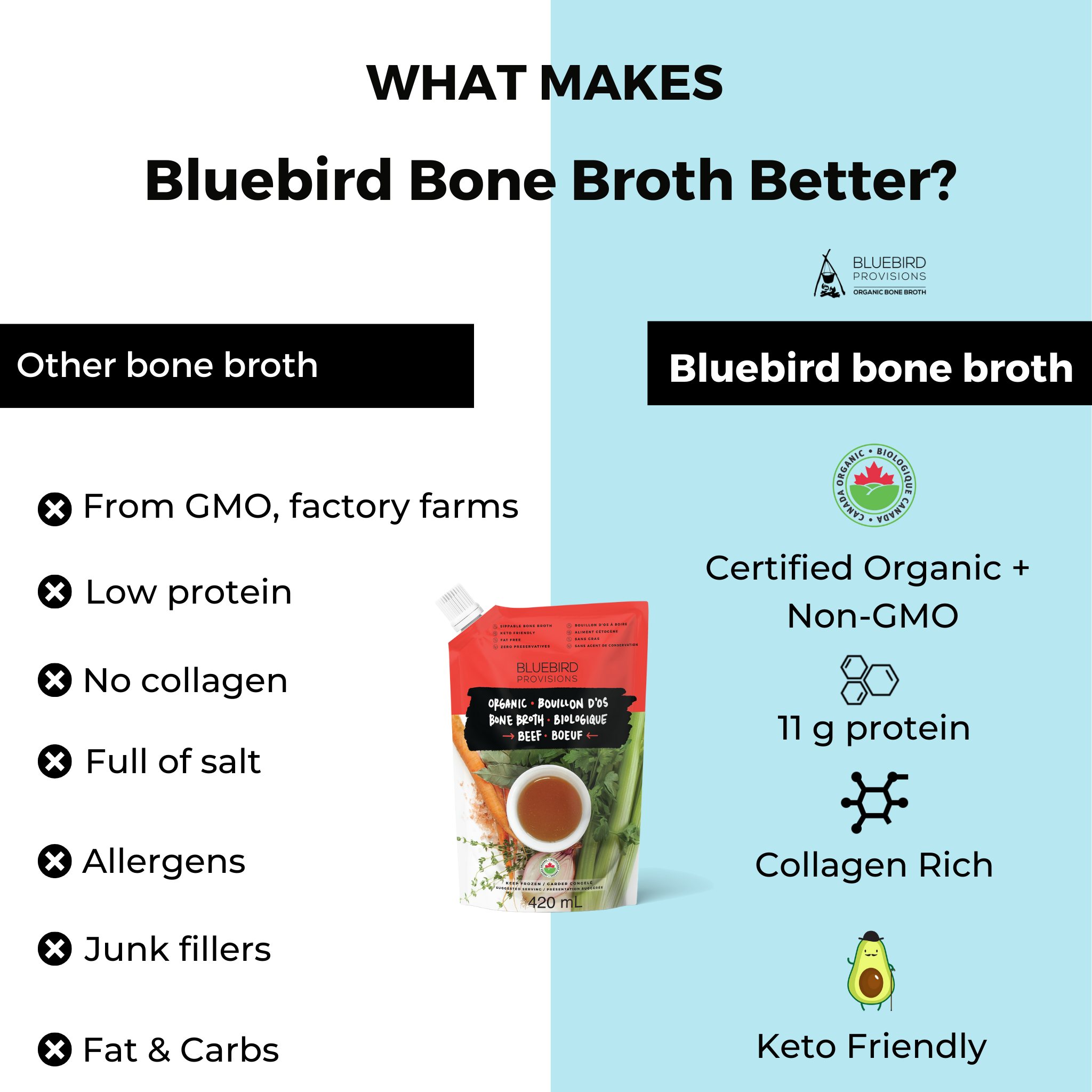
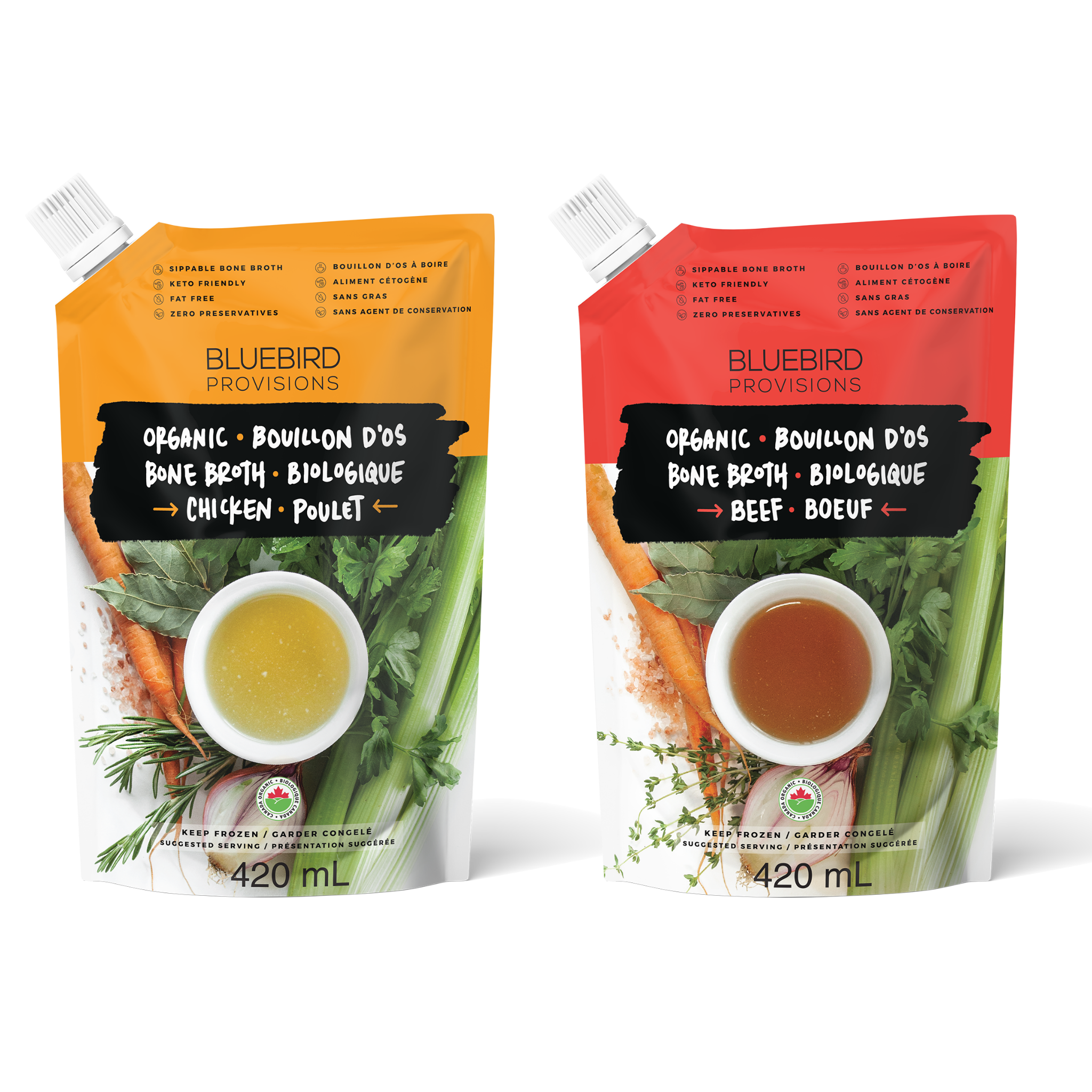
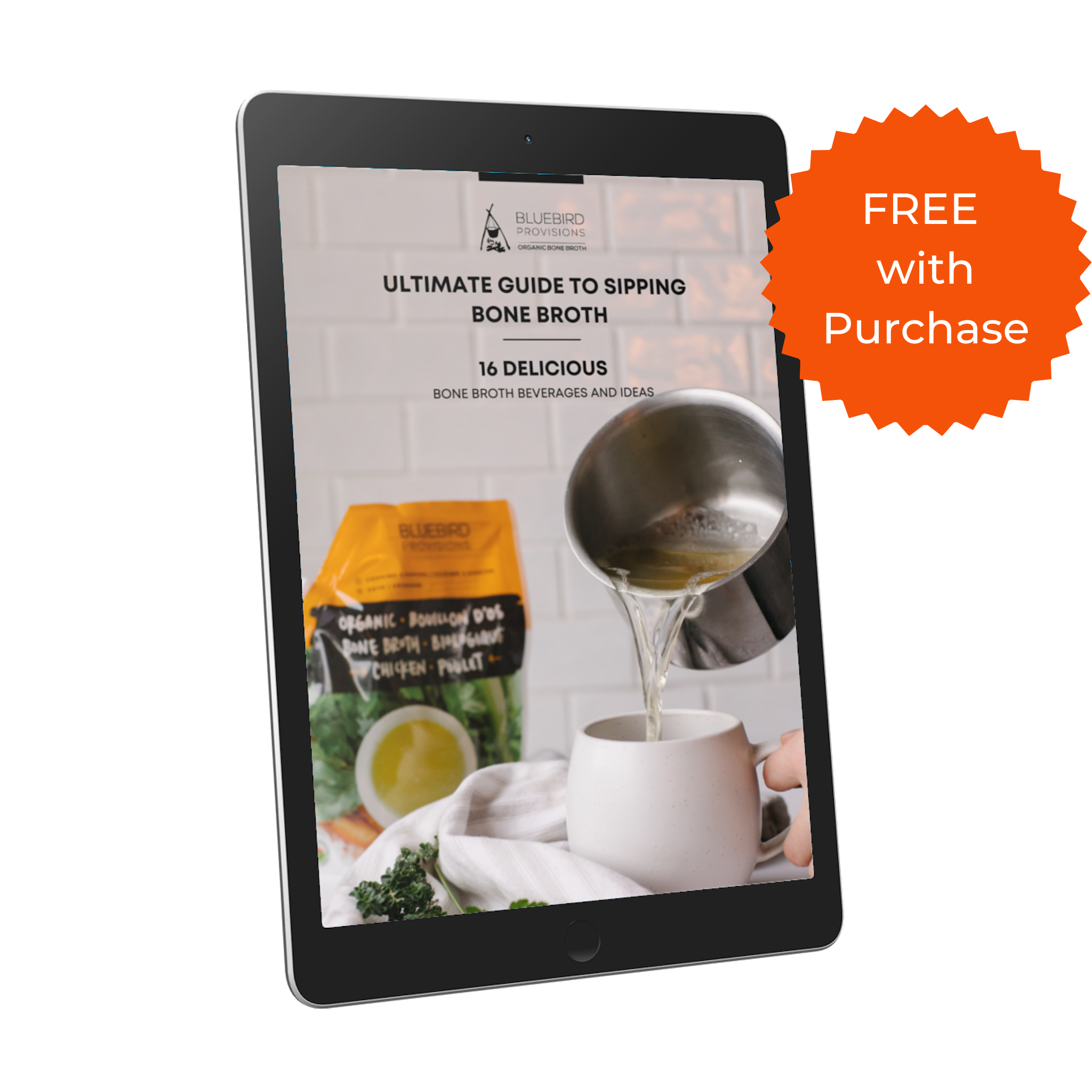
5 comments
Switched to chicken thighs about 5 years ago, great slow cooked in coq au vin. Every joint and knuckle cooks into the sauce.
Bill
Hi Primrose,
I’m so glad you found my article and bone broth brand. Good for you for already doing your part and reaping the rewards from it. Oxtail is my favorite!
All the best to you and your family and happy holidays!
connor
Connor at Bluebird Provisions
What an amazing article. I enjoyed the way it was written with facts and encouraged the customer to try it. I already eat oxtail, kidney and liver and found them so delicious like you said. we truly should embrace our ancestors as they lived longer and knew the value of all the animal parts. Thank you for sharing this amazing post. I will definitely be ordering . Merry Xmas.. Primrose
Primrose Simmonds
Hi Max,
Sounds like a cool restaurant i would certainly go to. I’ll shoot you an email now about nose to tail.
Connor at Bluebird Provisions
Hi there -
I am a restaurateur looking at starting a waste free fast casual concept in Toronto, Canada. While many of my colleagues turning to waste-free are using vegan menus, its just not something I can pursue with any degree of passion. My love for food is why I entered the restaurant business and part of that love for food is meat. Instead of moving away from meat, I would like to create a model for doing meat the right way, and hopefully, serve as an example for others. Obviously, nose to tail is a necessity in a waste free model but I have several questions around both the customer facing story and actually executing it in practice. If Connor or someone else on your team had some time for a phone call, I would greatly appreciate it. My name is Max and my email is mdaviau13@gmail.com. Thank you!
Max
Leave a comment
This site is protected by hCaptcha and the hCaptcha Privacy Policy and Terms of Service apply.